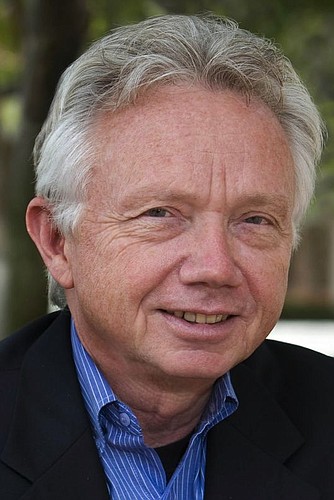
More than a dozen Downtown, design, economic development and environmental advocates shared ideas Wednesday about how to make the Northbank district a healthier place to live, work and play.
Here are a few: Provide more access to the St. Johns River. More shade and security for walkers. High-quality density. Communication and cooperation among Downtown property owners.
“We see more and more chronic diseases from inactivity,” said keynote speaker Richard Jackson, chair of Environmental Health Sciences at UCLA’s School of Public Health. He is a former director of the U.S. Centers for Disease Control and Prevention’s National Center for Environmental Health.
Jackson led the discussion at a joint meeting of the Urban Land Institute North Florida chapter and AIA Jacksonville, a chapter of The American Institute of Architects. The event was titled “The Future of the Northbank Riverfront District, Building Healthy Places.”
About 225 members and guests of the organizations met at the Hyatt for the noon event, bracketed by morning and afternoon sessions in which the advocates met individually with Northbank business owners and others who pitched their views about a healthier Downtown.
The Northbank-focused event was part of a ULI grant among its Florida districts to research how urban design and development can impact health.
“We started with this study area because we had to start somewhere,” said Trip Stanly with the group’s Building Healthy Places steering committee.
He said the results would be transferrable to other areas, scalable to other sizes and will “make Jacksonville a healthier place.”
Stanly heads Blackwater Capital LLC.
ULI used its “Ten Principles for Building Healthy Places” as a guide to the discussion.
Among the Northbank observations and comments from the panelists:
• The riverfront of the St. Johns River should be more accessible. Development should be set back to allow more access, and access points should be better identified.
• The Cummer Museum of Art & Gardens in Riverside is a successful example of redesigning sidewalks and improving community engagement.
• Communication among and from organizations along the riverfront is beneficial, linking events such as the Riverside Arts Market, Unity Plaza and Downtown.
• Signage is critical so that visitors and pedestrians can appreciate the riverfront, events and points of interest.
• Pedestrians need more shade and security features to fully engage with the Riverwalk and sidewalks in the core Downtown.
• Northbank needs more walkable areas to encourage employees and residents to walk rather than drive or remaining indoors over lunchtime,
• A healthier environment would lead to more active employees.
• Employers could reap economic benefits from healthier employees, such as lower insurance costs and less absenteeism.
• Companies should offer incentives by providing healthy activities for employees, such as access to exercise options and gyms as well as healthy food and snacks.
• Higher density, which is the number of people who live or work in an area,
can be advantageous if it’s a healthy and inviting environment. Higher density also could generate more walking, biking and the use of mass transit.
• Top destinations on the Downtown Northbank include the St. Johns River, the riverfront and the Riverside and Five Points areas.
• New projects and policies would benefit from a health impact assessment before they are enacted.
“We have to create environments to entice people to be physically active,” Jackson said.
@MathisKb
(904) 356-2466